West Bengal is home to a variety of native arts and crafts such as kantha, dokra, handloom weaves, terracotta and many, many more. However, the artists employed in their creation find it challenging to be represented in a mainstream market that can help sustain them.
A celebration of folk art
Banglanatak dot com, a social enterprise headquartered in Kolkata, has been working to bridge the gap between artisans and their customers. Working on the goals of “sustainability, creativity and resilience,” they organise various programmes and events to work with rural artisans and the small businesses who can collaborate with them.
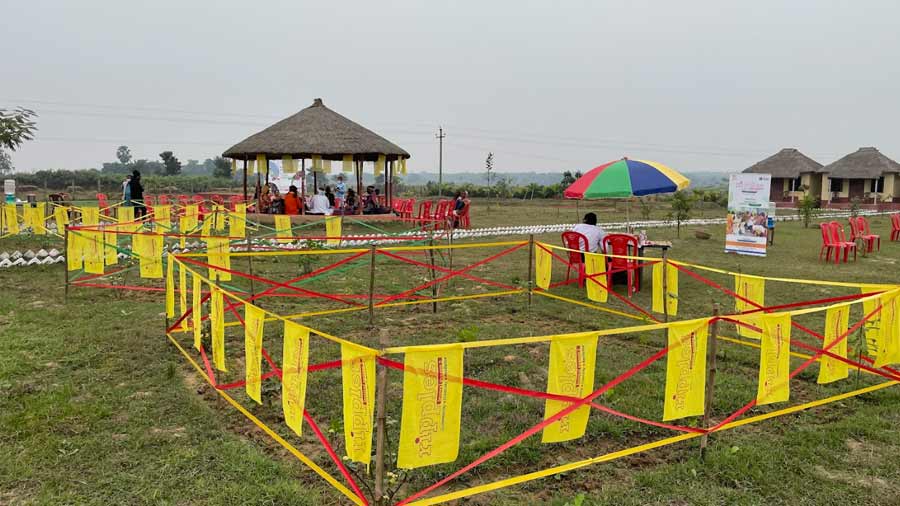
One of the locations for the festival was the Bannabagram Baul Fakir Ashram Aatreyee Mohanta
One of their events is the Ripples Festival, the second edition of which concluded on December 5. Supported by the British Council, the three-day festival was held across three villages — Bannabagram, Dariyapur and Tepantar — in Purba and Paschim Bardhaman (East and West Burdwan). This year, the spotlight was on the region’s indigenous arts of kantha, dokra and folk theatre.
In the words of founder-director Amitava Bhattacharya, they wanted to “promote rural cultural tourism of Bardhaman, create a link with the community and give opportunities to people who never had it before.”
My Kolkata visited two of the villages and got a chance to interact with the artisans and learn more about their craft.
The embroidered art of ‘kantha’

A dupatta with the traditional ‘kantha’ motifs of scenes from village life Aatreyee Mohanta
Among the artisans who gathered at Bannagram Baul Fakir Ashram were around 20 women kantha artists.
A form of hand-embroidery, the art is mainly practised in the district of Birbhum. Under the initiative of banglanatak dot com, veteran artists from Birbhum trained a group of women from villages of Burdwan before the festival. Lavli Bibi Sekh and Tajkira Begum were two of the supervisors who helped train the women — aged between 19 and 50 — from nine villages. The training not only helped them perfect the craft, but also gave them financial independence.
Lockdowns and roadblocks
“We saw a lot of interest and eagerness to learn the craft among the women we trained. Many knew about kantha because they embroidered at home, but we trained them to look at it as an art form that they could create, sell and earn money from,” said Bibi Sekh.
With the pandemic and lockdowns, the artisans have hit more roadblocks in trying to reach the people interested in procuring their art. They believe that initiatives like the Ripples Festival can help in overcoming those obstacles.
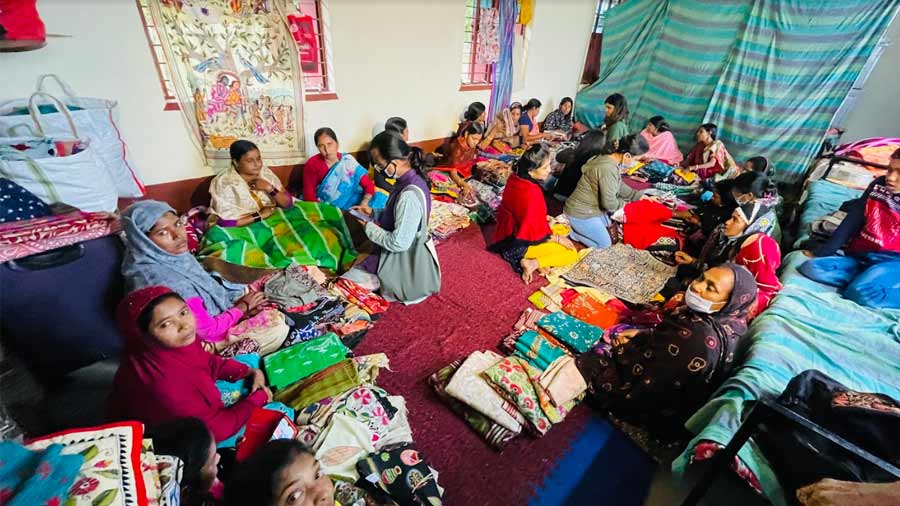
The women artisans showcased their work and interacted with visitors who came to the festival Aatreyee Mohanta
“We were not technologically savvy before. We did not know of WhatsApp or even have our own bank details. With the pandemic, we realised that if we didn’t take the initiative to learn, we wouldn’t be able to sustain ourselves. Now, we take photos on our phone and message our buyers who can easily transfer money to our bank accounts. We have also taught these skills to the women we trained,” said Begum.
Kantha work can be seen on myriad things — from bags to clothing. The most intricate and traditional kantha work is usually seen on sarees, most often on handwoven tussar. Speaking about the labour-intensive art form, Bibi Sekh and Begum said that the work on an elaborately done silk saree can take up to three months to complete.
The metal creations of ‘dokra’
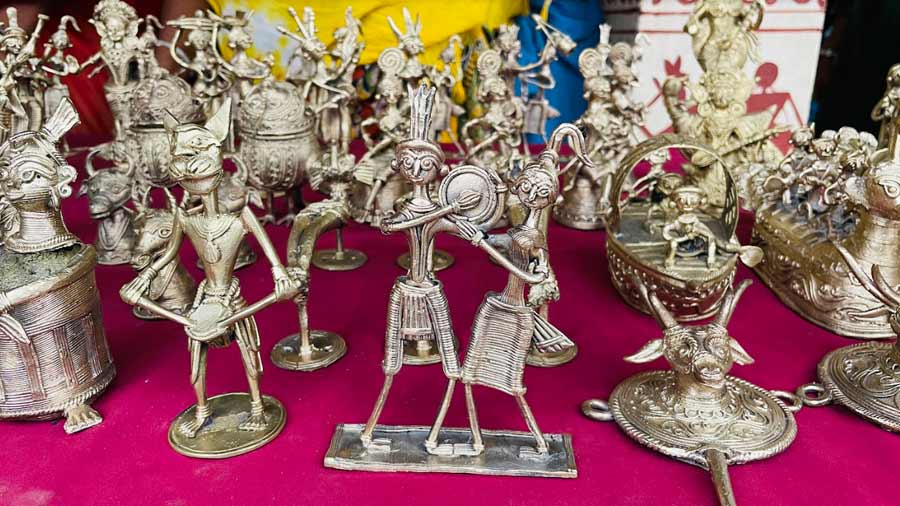
Dariyapur is known for its ‘dokra’ metal work and has some 133 artisans creating fine metal handicrafts here Aatreyee Mohanta
A 40-minute drive from Bannabagram is the village of Dariyapur, known for its dokra work. Most of the artists’ families here migrated from Odisha over a century ago. Today, the village’s 133 artisans are engaged in creating dokra handicrafts under the banner of Dariyapur Dokra Artisan Co-operative Industrial Society Ltd. The West Bengal government’s Department of Micro, Small and Medium Enterprises and Textiles, in association with UNESCO, has developed a Rural Craft Hub at Dariyapur.
Skill and labour-intensive craft
The process of creating dokra artefacts is labour intensive and demands combining metallurgical skills with techniques of lost-wax casting. Moulds made with clay, sand and rice chaff are filled with wax, which is then moulded to create figurines or designs.
The finished design mould is coated with mud or clay with drains, so that the wax can melt out when the mould is heated. Copper-based alloys such as brass are used to make the finished piece by pouring molten metal into the mould and leaving it to harden. Once the wax has melted and the mould is cool, the clay is broken and the dokra pieces are polished till they get their iconic golden glow.

‘Dokra’ pieces are polished to give it their unique golden glow Aatreyee Mohanta
Dariyapur artist Subho Karmakar spoke about how the craft is usually passed down through generations. “My grandfather did it, my father did it and my children will do it too. It’s in our blood. This is our dharma, karma and profession, and we enjoy it thoroughly.”
Karmakar said that each family practices the art of dokra individually, but they all use a common furnace that is burning almost all the time. The brass used in the making of these pieces is locally sourced from nearby Guskara.
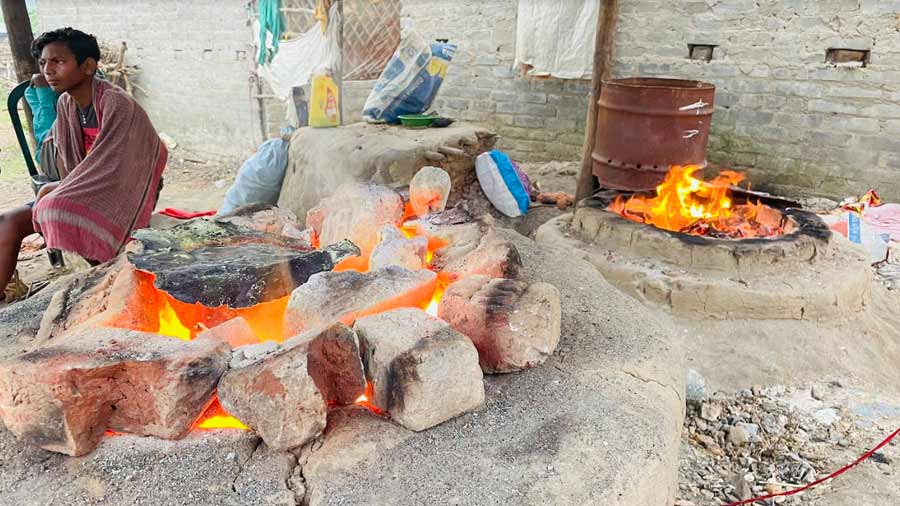
The community furnace in Dariyapur, used by craftsmen to melt metal and heat up the moulds, is almost always burning Aatreyee Mohanta
The high notes of folk theatre
Apart from kantha and dokra, Ripples also featured traditional Baul music, folk theatre, tribal puppetry from Ausgram and the craft of making wooden dolls.
At Tepantar, the stage came alive with folk theatre performances by six district theatre groups at Tepantar Theatre Village. Alongside the live performances, there were also workshops organised for folk theatre groups. Online webinars connected artists in India to those around the world and featured speakers like Baul musician Girish Khyapa, Irish musician Jason O’Rourke and Debanjan Chakrabarti, the director of British Council East and Northeast India.
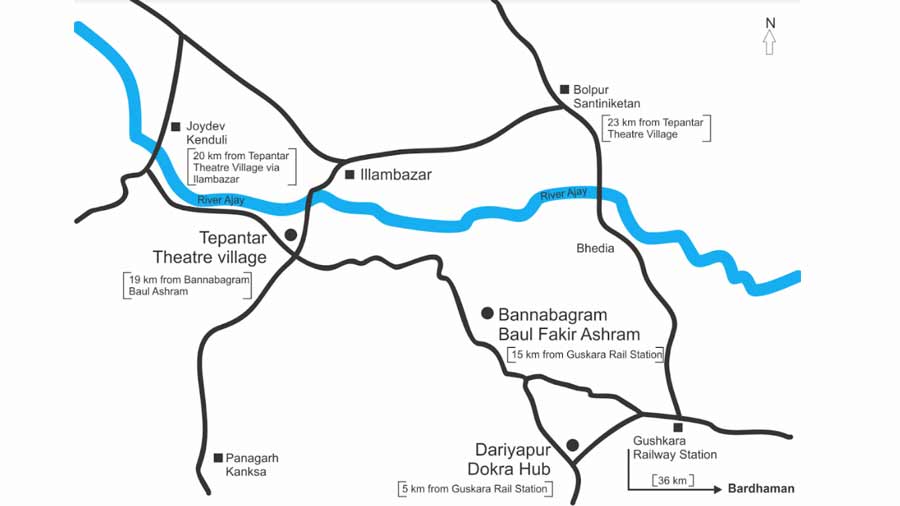
The Ripples Festival was held across three villages in Purba and Paschim Bardhaman Aatreyee Mohanta
